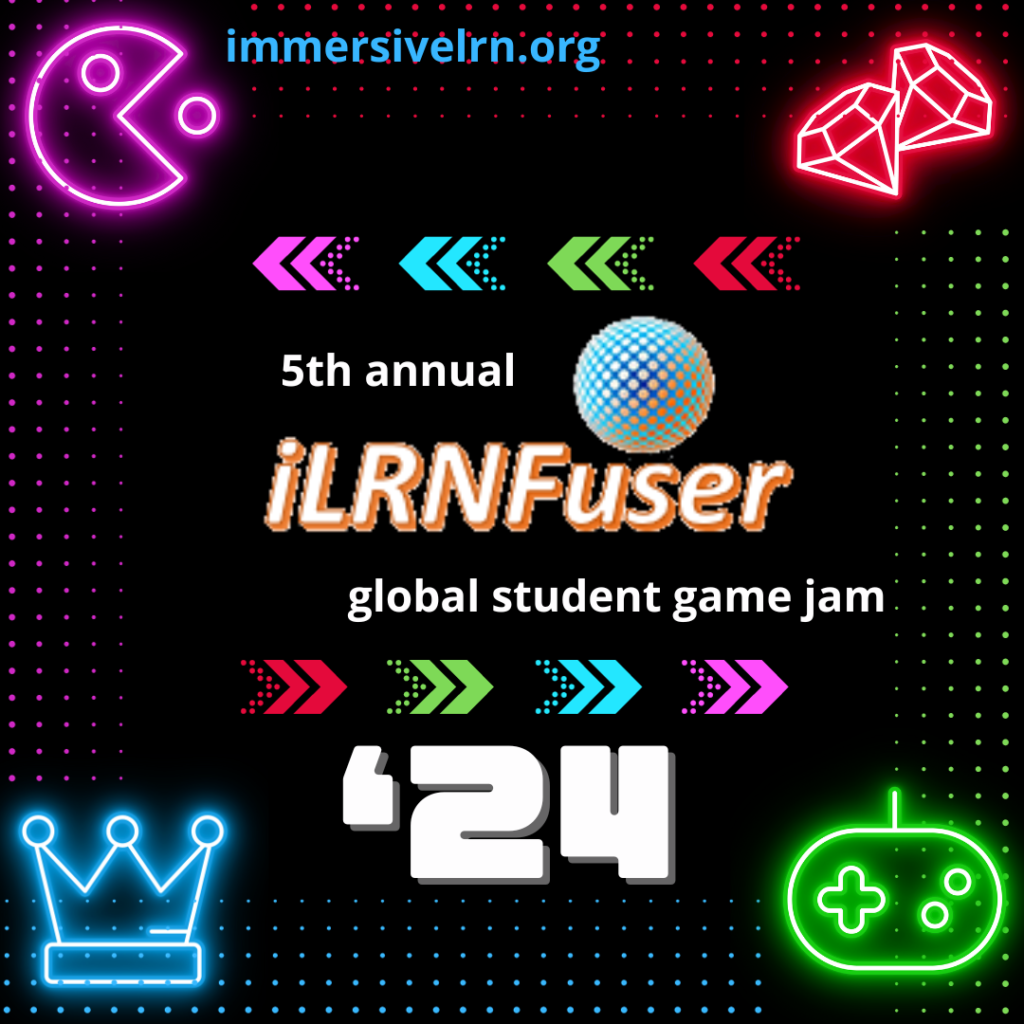to Jonathon Richter, Ed.D’s personal and professional website .
Inspired to co-create high quality immersive learning experiences through evidence based co-design, creative problem-solving, and futures studies!

As CEO of the Immersive Learning Research Network, Dr. Jonathon Richter is focused on creating inclusive and meaningful community for the emerging field of design, research, and applied understanding of immersive learning experiences to amplify its transformational potential for everyone and our planet.
About
Dr. Jonathon Richter is a learning scientist with almost 25 years experience working collaboratively in Design-Based Research teams with teachers, subject matter experts, computer scientists, artists, designers, psychologists and other learning experts in academic, business, governmental, and local contexts. He currently lives in Missoula, Montana with his wife Suzanne Tilleman and their son Griffin. Daughter Sophia lives in upstate New York.
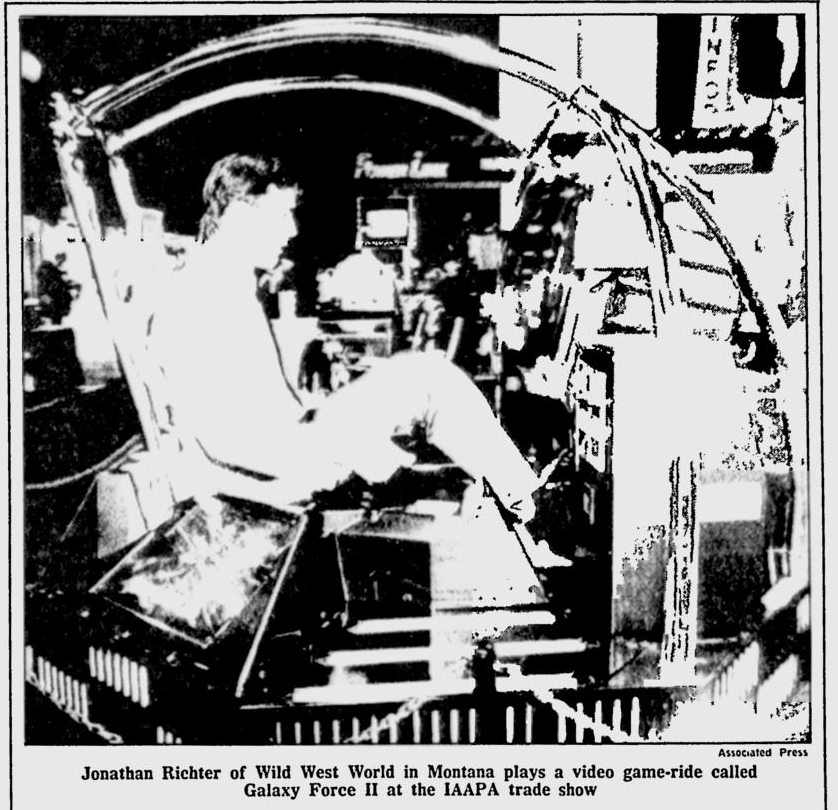
Biography
Born and raised in Havre, Montana, Jonathon Richter holds a Bachelor of Arts (B.A.) degree in Psychology (1992), Masters of Education (M.Ed.) degree (1998), and a Doctorate of Education (Ed.D.) degree (2003), each from the University of Montana. Following college, he returned to Havre to start his family and his career as a successful grant writer and project coordinator of educational technology, then later as Assistant Professor of Graduate Education Programs working for Montana State University – Northern in Havre, Montana (2000 – 2005).

At MSU-Northern, Jonathon led in the co-creation of a Community of Practice across northern Montana amongst four (4) Tribal Colleges, and more than sixty (60) rural school districts in northern and central Montana, plus faculty from three of the colleges of the university – all focused on creating experiences using emerging technology for pre-service teachers.
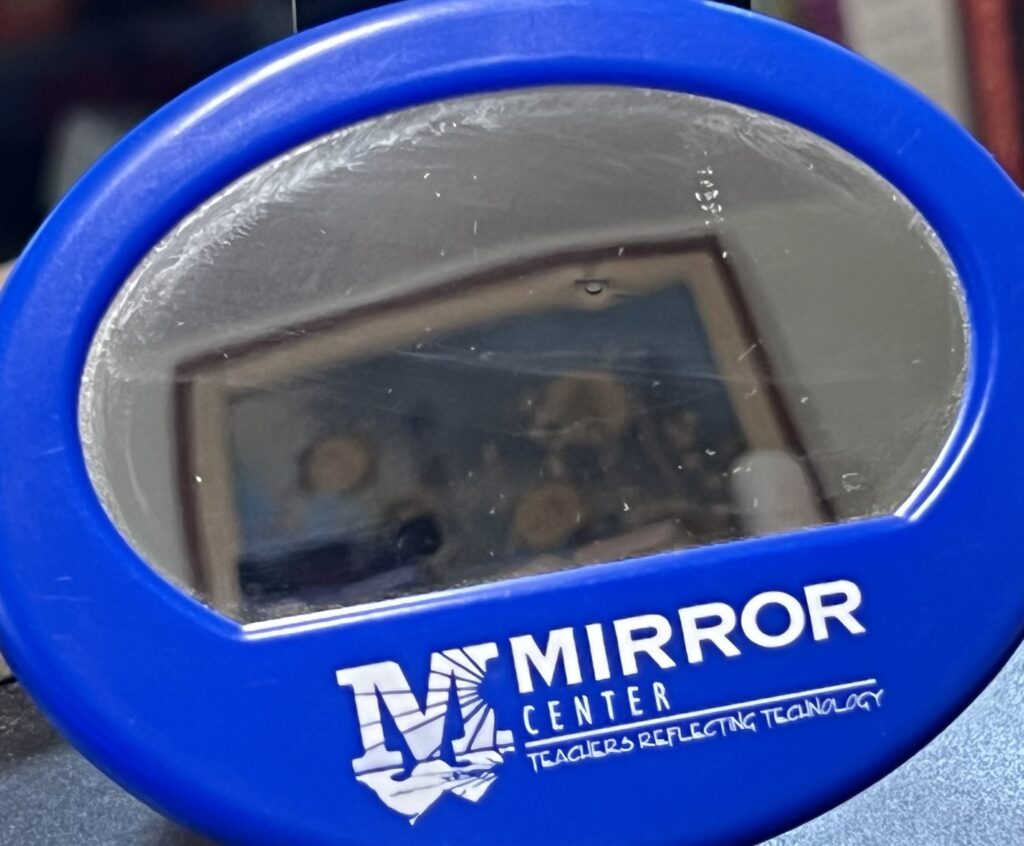
Inspired by educational futurist Dr. John Lundt, his advisor at the University of Montana, Richter completed his doctoral dissertation, entitled, “The Role of the Future in Work Motivation” (2003) and then collaborated with the City of Havre for federal funding and state Board of Regents’ approval for a new statewide futures institute, NARFI while working at MSU-Northern. To this day, Richter views education as a necessarily and primarily future-focused community endeavor. We learn so as to prepare for the future.

The newly minted Dr. Richter continued work with Dr. Curtis Smeby to host and teach in the Masters of Science in Learning Development at MSU-Northern, building online course supports for face-to-face cohorts in Browning, Helena, Great Falls, and Havre, Montana. Richter taught “Research Methods”, “Learning Technologies”, and “Critical, Creative, and Futures Thinking” courses to graduate students at each location, developed the student portfolio, and conducted final comprehensive exams. Richter continues to feel deeply connected to the people and big skies of the wide open plains of northern and eastern Montana.
_________________
In 2005, Dr. Richter accepted a position as Research Associate at the University of Oregon‘s Center for Advanced Technology in Education (CATE).

There, under the guidance of Dr. Lynne Anderson-Inman, he developed technical and applied expertise coordinating federal grant-sponsored teams conducting design research in support of students with learning disabilities to improve achievements in performing everyday school-related tasks. Creating and testing “scaffolds” (Bruner, 1966) and “implementation bridges” (Hall & Hord, 2006), the CES team developed learning for students with learning disabilities through developing practice of setting sequential, manageable targets of students’ repeated engagement with schoolwork-related content, breaking larger tasks into easy-to-digest chunks, concept-mapping for visual comprehension, creating adjustable interfaces for students to customize course pacing, structure, presentation and assessments – as well as exploring and testing ways to make content most relevant to the learner.
_______
Computer-based Study Strategies (CBSS)
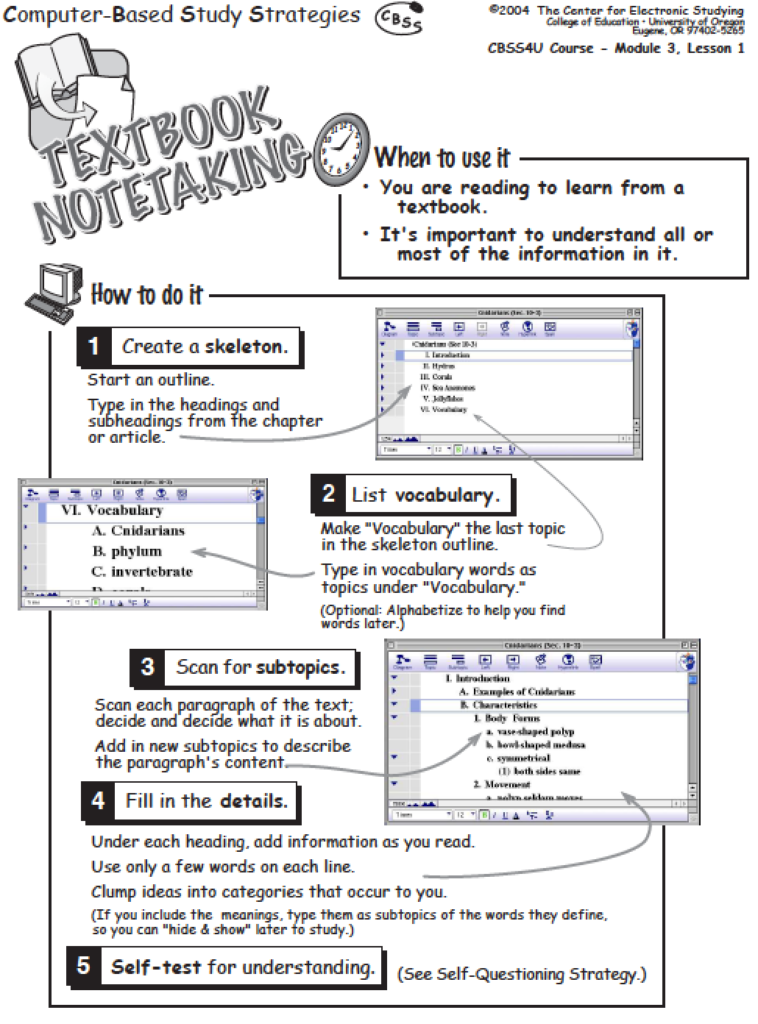
CBSS are evidence-based techniques for “what works” with students with learning disabilities in the classroom… ported to the computer environment and tested in rigorous, authentic learning trials. In research trials that Richter conducted, they compared student performance in a course built on these principles to student outcomes from similar online courses developed for “struggling students” but not specifically designed using principles carefully drawn from educational research. Their CBSS4U course was evidence-based, including David Rose’s Universal Design for Learning principles and Lynne Anderson-Inman and Mark Horney’s work at the Center for Electronic Studying and the work organized under the National Center for Supported electronic Text (NCSeT). The National Center’s Oregon Research Unit investigating the relative impact of video supports for students with learning disabilities comprehension of biology texts was led by Dr. Richter.
Learning Sciences principles embodied in Computer-Based Study Strategies (CBSS):
- Evidence-based. Relying heavily on the literature of the time for “what works” for students with learning disabilities, the CBSS Research Team had a working conceptual framework and design process using expert information for building the course.
- Cognitive-load. Text was clear and easy to read. The presentation and pacing of course materials were broken down using “chunking” methods of instructional design. Dual-coding, of putting information in BOTH words and pictures, was regularly employed. Students had the option of listening to the course text read to them on a recording on each page too.
- Way-finding. Using information design principles to increase usability and reduce cognitive load. Clear, consistent user interface design principles, such as the use of color to indicate activities and sections, plus, course overview maps, timelines, and course progress meters were all implemented.
- Constructivist. – The course integrated practical examples that students could use, providing opportunities for regular feedback, building upon their interests and backgrounds in rudimentary ways and encouraged students to weave in their actual course assignments from school. Richter led the CES Research Team in designing an interleaved or spiraling curriculum, where students revisited previous instruction with the addition of new curriculum throughout the course.
- Multiple pathways. – Creating online courses that co-vary learner presentation, interaction, & assessment – usually through learner/user choice and control.
Through these multi-year research-and-design experiences, Richter facilitated outreach to regional Oregon K-12 Schools, coordinated a four-person Research and Design Team, reporting to federal agencies, presenting at conferences, writing academic papers, and actively learned technical instructional design skills working with programmers, research assistants, and developers for students with Learning Disabilities.
Some of the research and design principles Richter and his team performed are summarized in Keeler, C., Richter, J., Horney, M., Anderson, L. and Ditson, M. (2007). What works for exceptional learners: Differentiated instruction online. In What Works in K-12 Online Learning, edited by C. Cavanaugh and R. Blomeyer. Eugene, OR: International Society for Technology in Education, below:
_________
With Dr. Anderson-Inman’s encouragement, Dr. Richter also began developing his own research agenda and funding support through CATE at UOregon, including:
- ePortfolios
- Electronic Portfolios, or ePortfolios are digital systems for displaying student &/or professional work, typically based on industry or professional standards – and, in many instances, under at least partial creative control by the student/owner, themselves. Dr. Richter led the faculty of the MSU-Northern College of Education to implement ePortfolio systems and processes in both undergraduate and graduate programs. Then, as part of a University of Oregon’s Provost-funded initiative, in 2007 and 2008, Richter led a collaboration between lead faculty from programs as diverse as Architecture, Arts Administration, Journalism, and Business to develop, pilot, and test the potential for standards-based student electronic portfolios using WordPress. With Dr. Trent Atkins at The University of Montana, Richter helped co-pilot an electronic portfolio documentation process for Teacher Candidates during Spring Semester 2013 and at Salish Kootenai College, Richter implemented a culturally relevant, standards-based portfolio system for the Associate of Arts Digital Design program (2014 – 2019).
- Indeed, Richter’s design research interests in student ePorfolios as authentic stories of learning and dynamic vehicles for performance-based assessments continues across much of the arc of his career, focusing on the use of narrative prompts (“recipes”) and low / no code creative toolsets for getting students to reflect on and represent what they learned, why it matters, and eliciting their prospective goals. (i.e. What? So What? Now What?).
Future-focused and immersive 3D ePorfolios continue to be a particular interest of Richter’s, as they represent an authentic, multimedia form of learning assessment and have such incredible potential for student growth.

ePorfolios offer unique and perhaps some of the best ways for educational programs to draw their students into comprehensive engagement and storytelling in ways that meet professional, academic, and personal standards of excellence.
- Immersive Portfolios: students design immersive spaces that represent who they are, what they know and are able to do, and their goals and aspirations. Richter had a build on the San Jose State University plot (2009 – 2012) in Second Life with the following concepts mapped out for people to explore:
- Immersive GiftShop or StoreFront: the student puts works in their GiftShop or Storefront and the number of sales of digital artifacts can be used as a measure of the portfolio’s success.
- Adventure or Quest Portfolio: the person viewing the student portfolio goes on a quest or adventure!
- Immersive public gallery show: the portfolio author sets their work up in a 3D gallery and invites people to come to a gallery opening – when the portfolio owner meets guests and they walk through the gallery.
_________________
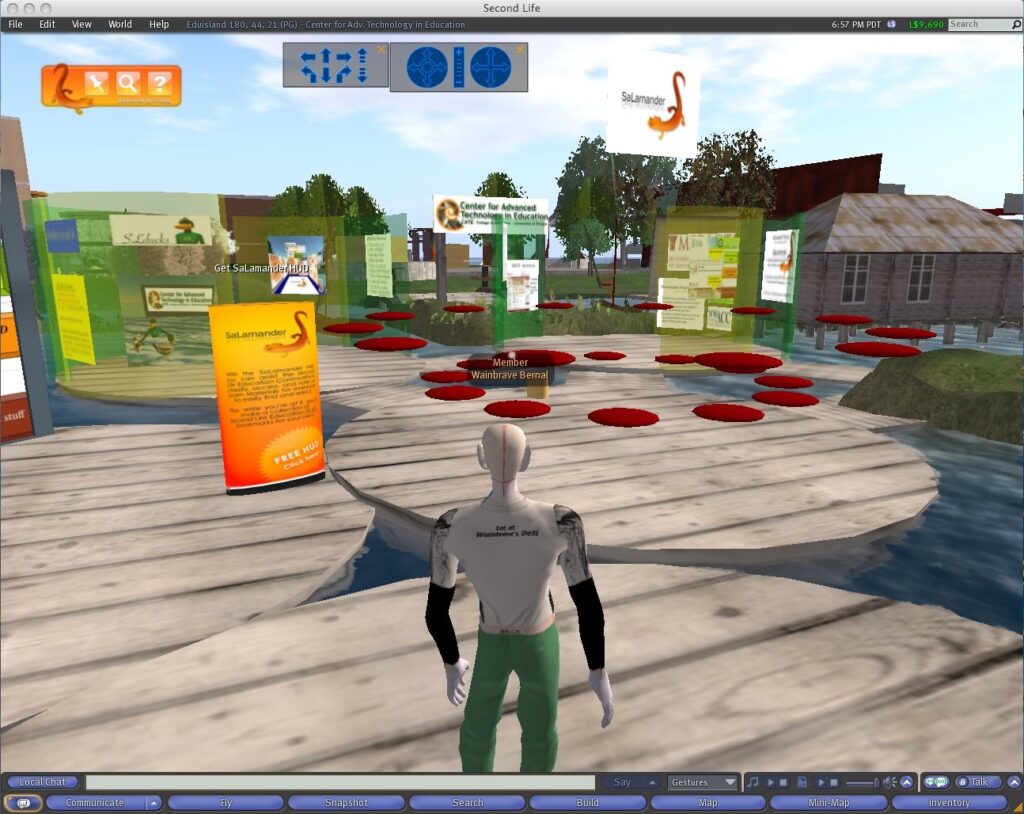
In the same way that people can present themselves using a wide variety of media and method in the physical world, Learning in digital 3D can be designed using various methods of engagement.
- Demonstration: ripped straight outa the boardroom in old school fashion, and maybe taking tips from television and advertising, presentations in 3D worlds are often “projected up on a screen” accompanied by a live presenter. It’s the easiest to conjure and make happen, being a relatively passive form of presentation and relying on symbols, pictures and words to represent experience… rather than actually providing one. Interactivity is generally limited to the confines of the purposes of the demo (e.g. “press this button for more, ha ha!“)
- Experiential: using the affordances of 3D in Second Life and creating a phenomenon for the visitor to experience.
- Diagnostic: engaging with the Second Life build, interacting with the environment to test your own knowledge or skillset.
- Role-play: Using the rich Second Life landscape to create spaces for role play.
- Constructive: Second Life is a highly “plastic” virtual world environment, allowing the users to build on parcels they have been granted permissions, placing, moving and stretching textured objects and embedding scripts into them. Construction + Collaboration is where the magic becomes possible. Co-Designing Second Life spaces for various purposes and harnessing that for learning has much potential.
- Collaborative: we can do it together. we cannot do this alone. let’s gooooo!!!!!
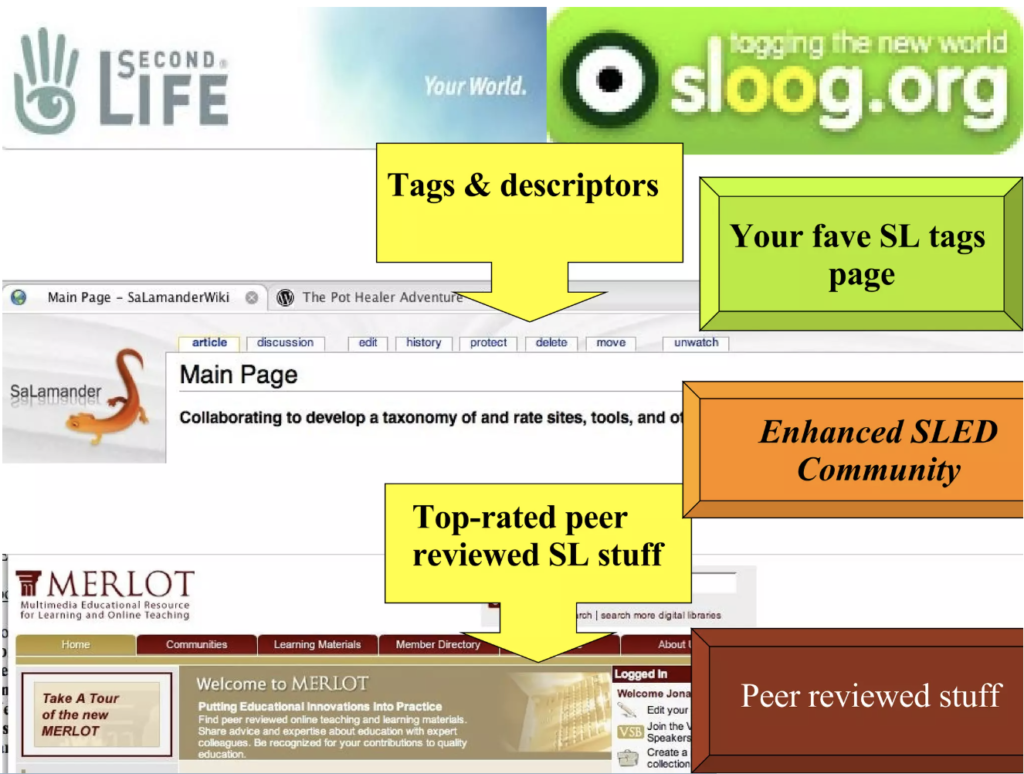
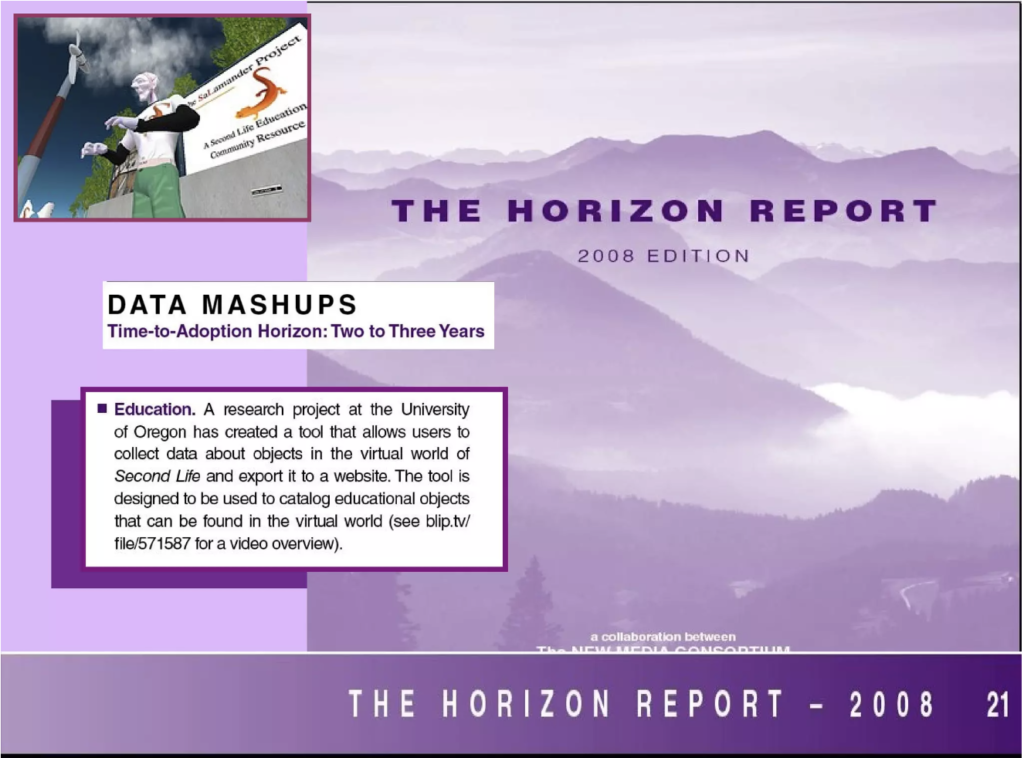
- Second Life/OpenSIM and Open Wonderland
- The Salamander Project: With a $10,000 grant from the NorthWest Academic Computing Consortium, Dr. Richter collaborated with SLoog, a company from Spain and Eloise Pasteur, a designer/developer in Second Life. Richter led in the creation of a Heads Up Display that could be “worn” in Second Life, allowing for places and people to be “tagged” using the MERLOT.org materials descriptors.
- NSF Virtual Organizations as Sociotechnical Systems (VOSS award #0838550) in partnership with Sun Microsystems and UOregon Lundquist School of Business Management faculty and students, Richter was co-Principle Investigator, helping lead investigations for how employees of Sun (then with over 37,000 employees, worldwide) who used Second Life or Sun’s Open Wonderland virtual world to do work on behalf of Sun.
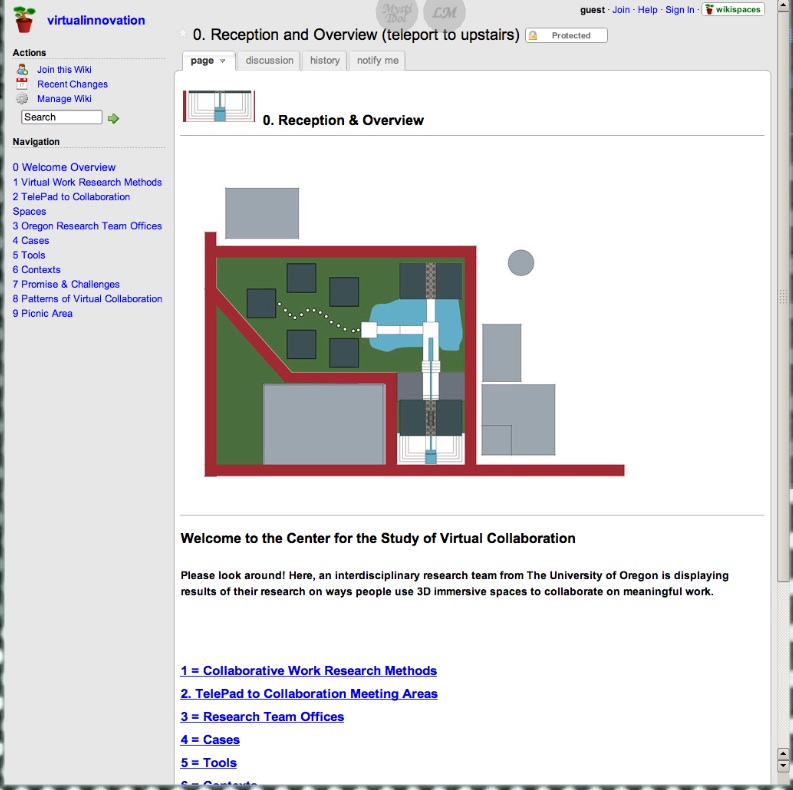
Richter led the VOSS Team in conducting interviews with Sun Microsystems employees using either Second Life or Open Wonderland for their work, and in-depth interviews with over a dozen people who identified as performing work in distributed teams within the virtual world of Second Life. While Richter’s personal interest was on the technology adoption and consequent work routines (Nelson & Winter, 1982), the team drew rich, multi-dimensional narrative data and evidence, publishing on the nature of “identity play” through avatar creation within the virtual work environment (Stanko, et al., 2019) and winning the 2019 Academy of Management Organizational Behavior Award for Best Paper of the Year.



___________________________________
Simulations and Games Development programs at Lane Community College (NSF ATE Award #0802580 ).
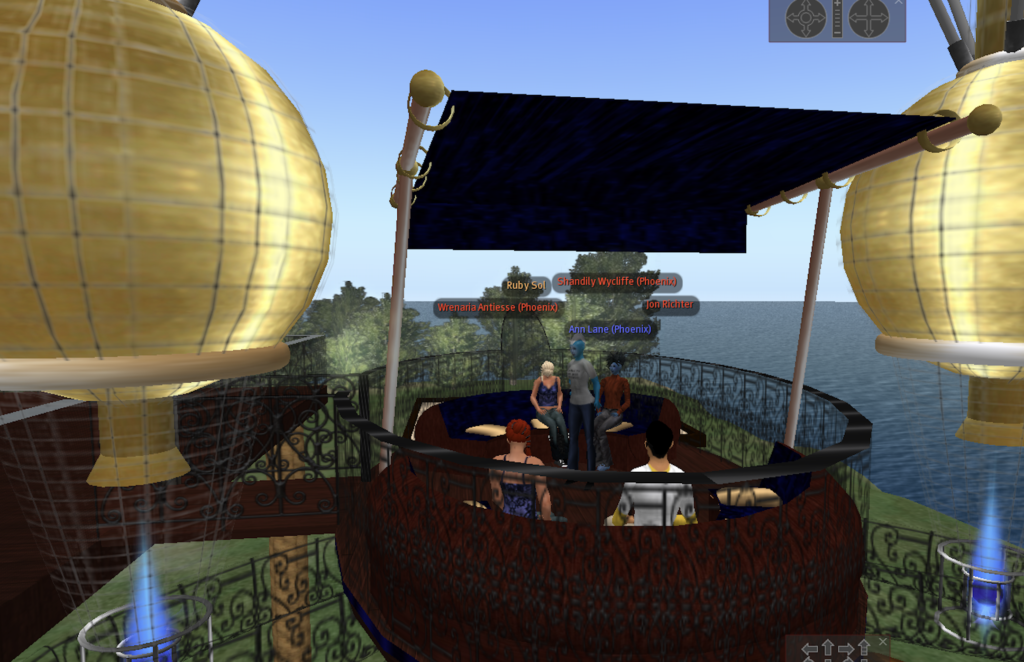
The Simulations Games Development Initiative (SGDI) at Lane Community College was funded by an award through the National Science Foundation’s Advanced Technology in Education (ATE) program with a partnership through the UO Center for Advanced Technology in Education (CATE), through which Richter helped lead as co-Principle Investigator. Richter co-designed and taught Introductory Game Design and community building courses in the virtual world of Second Life and also OpenSim, an open source virtual world platform. The project specifically looked for ways to engage females and was predicated on inclusive design principles and content specifically based on evidence and recommendations from The University of Baltimore and other programs who found that designing computer science curriculum with a larger purpose or context, and with curriculum that aligned with their larger community and social goals was more engaging for females and others who are statistically-speaking not demographics typically attracted to computer programming.
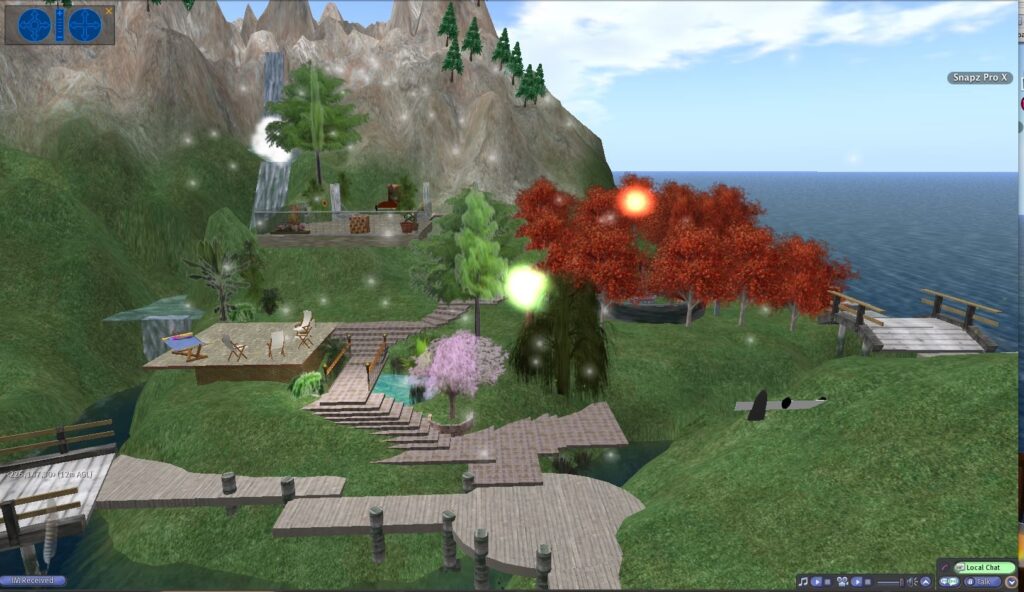
_________
Co-Designing with Game Design students at Lane Community College in Eugene, Oregon to create inclusive, interactive “third places” in virtual worlds was a landmark experience for Richter as he experienced leading in the development of intentional co-creation of community through immersive platforms and its potential to change people’s lives, build real and meaningful relationships, and achieve “real world” transferable skills… through play!
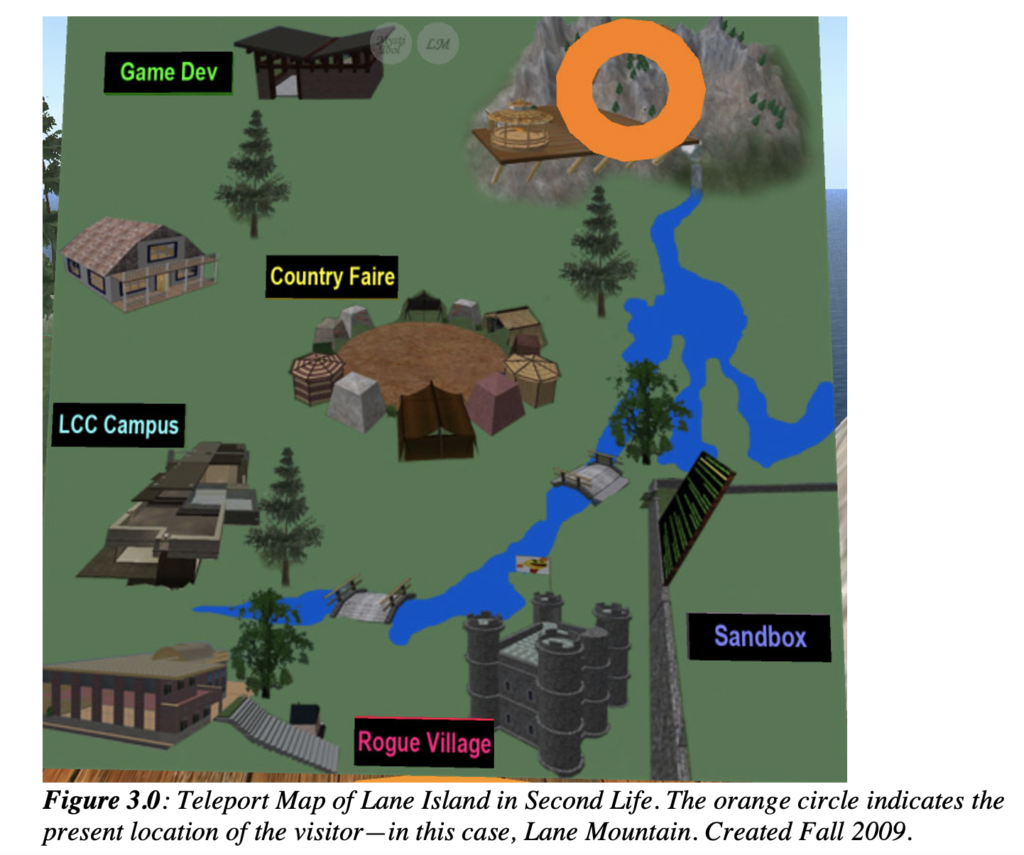
________________________
American Educational Research Association‘s
Applied Research in Virtual / Immersive Environments for Learning Special Interest Group
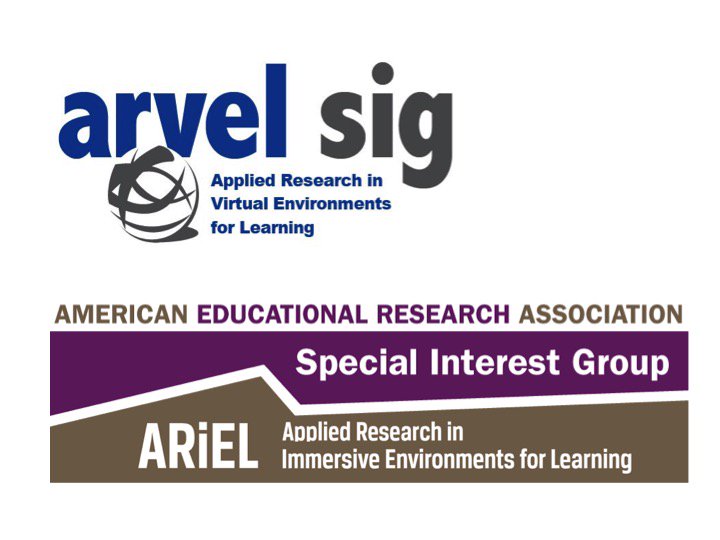
Jonathon had the good fortune to meet many of the top educational design-based researchers in the late 2000’s through his work in virtual worlds such as Second Life, Open Sim and Open Wonderland. Together with his colleague Lisa Dawley, Richter co-founded the Applied Research on Virtual Environments for Learning (ARVEL) SIG of the American Educational Research Association. Jonathon spent extra time on developing immersive field trips for SIG special events during the week of the AERA conference – visiting such immersive spaces as the Tulane Center for Advanced Medical Simulation and Team Training in New Orleans, the Exploratorium in San Francisco, and an Augmented Reality treasure hunt on the streets of downtown Vancouver, British Columbia, continuing to this day to make each annual iLRN conference an immersive experience in each year’s host location. Richter was founding Chair of ARVEL SIG from 2007 – 2012, after which he left to help form an organization that went beyond merely educational researchers and included game developers, designers, and the many experts in applied areas of the emerging genre: this effort led to the formation of the Immersive Learning Research Network.
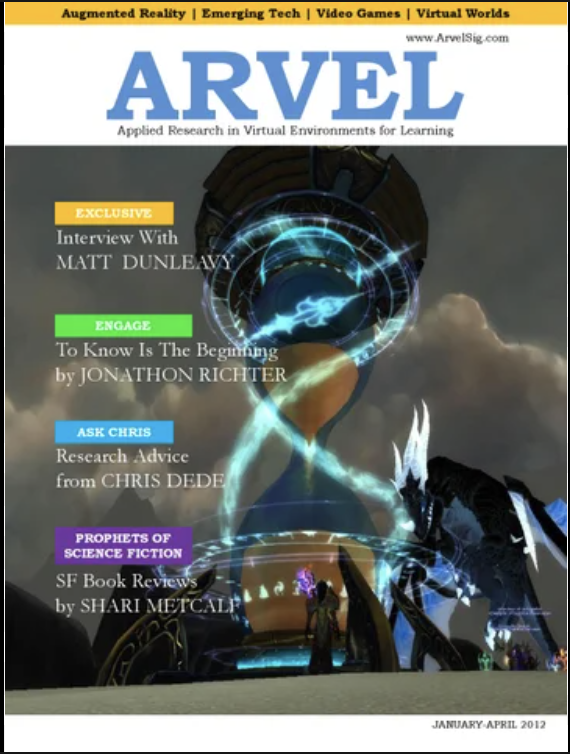
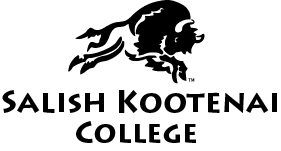
_____________
Salish Kootenai College
In 2012, Jonathon assumed the role of Chair of the Department of Media Design at Salish Kootenai College, a college operated by the Confederated Salish and Kootenai Tribes of western Montana. As lead instructor, Jon taught a wide variety of design courses for the Associate of Arts program, advising students, and finding qualified instructors to teach courses that he was not prepared to teach (such as videography and photography). To be better involved with the tribal community, Richter started an outreach program engaging 6th – 12th graders, community members, and college faculty, staff, and students, called “Flathead Tech4Good“.
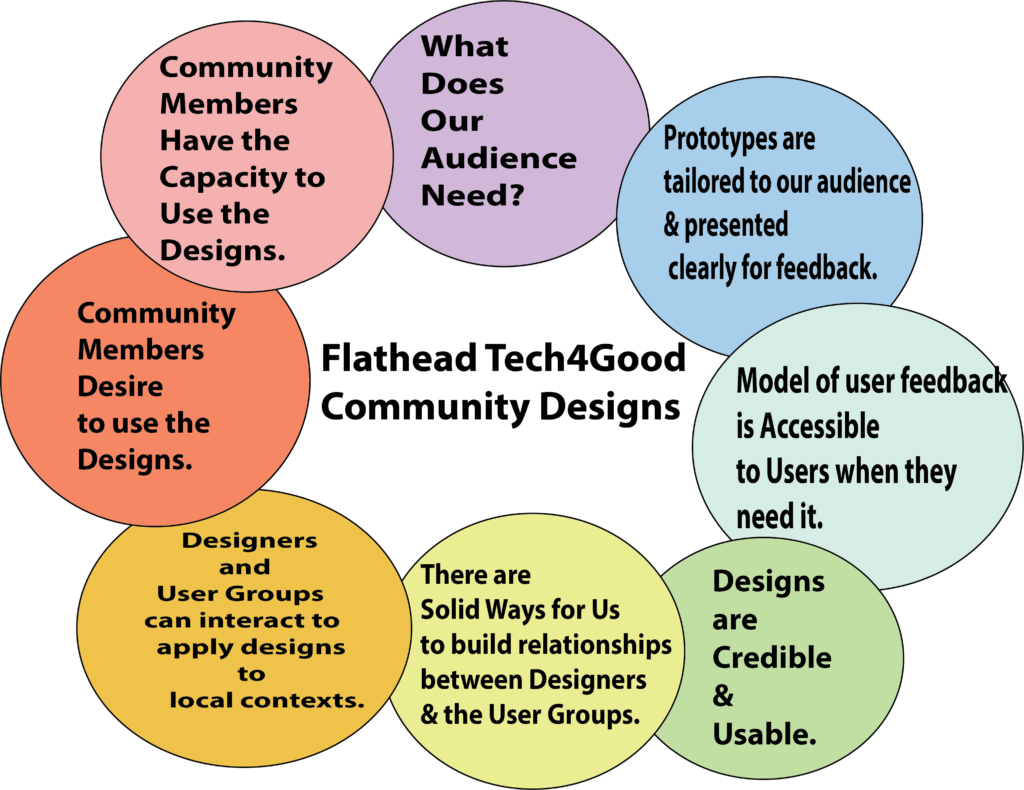
Flathead Tech4Good
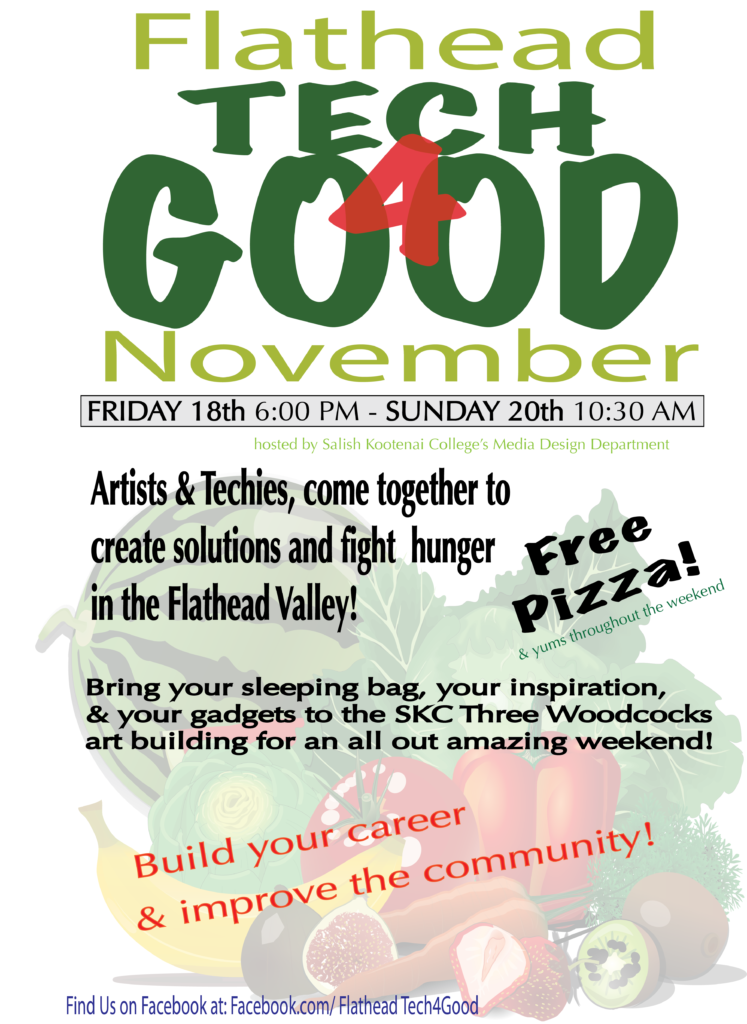
Tech4Good experiences were conceived as designed opportunities for college students and area youth to explore careers in art, science, and technology-related fields, to build technical and artistic skills, and to work together to meaningfully solve local community challenges. The idea was for SKC Media Design students to do meaningful work for the local tribal community while building their emerging skills in technology and design. Richter partnered with Rebecca and Brandon Goff, owners of local game designers Native Teaching Aids, turning Tech4Good into an annual “GameJam” theme that followed the culturally relevant “seasonal round”, with Fall, Winter, and Spring meetings.
Annual themes for Tech4Good:
2017 – 2018: Food Sovereignty
2018 – 2019: Water is Life!
2019 – 2020: Community Health
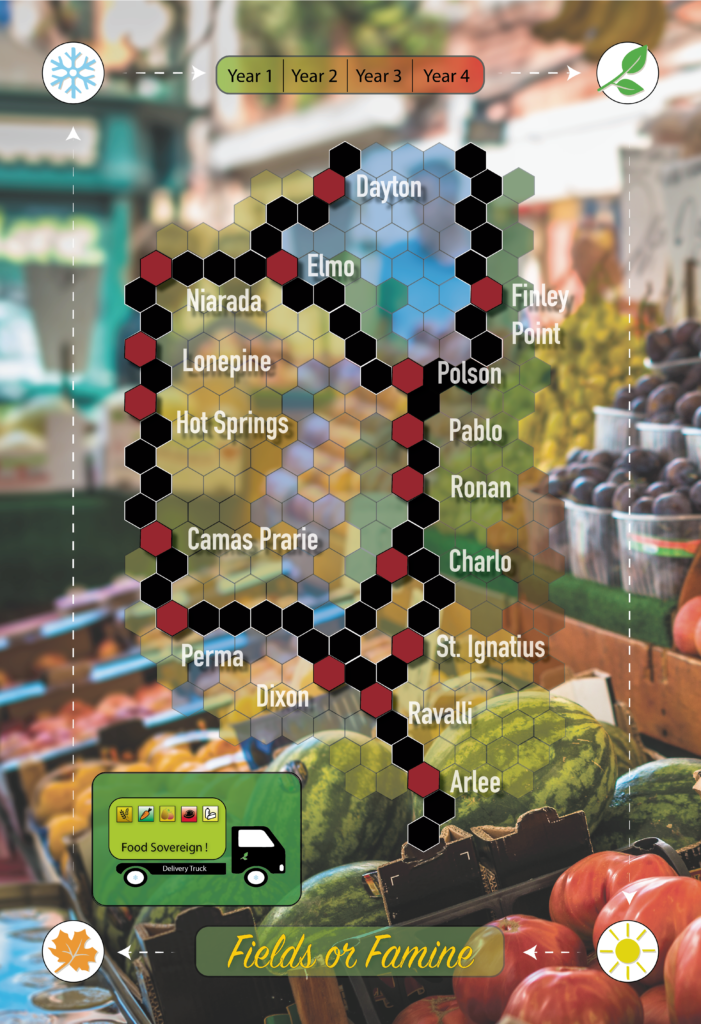
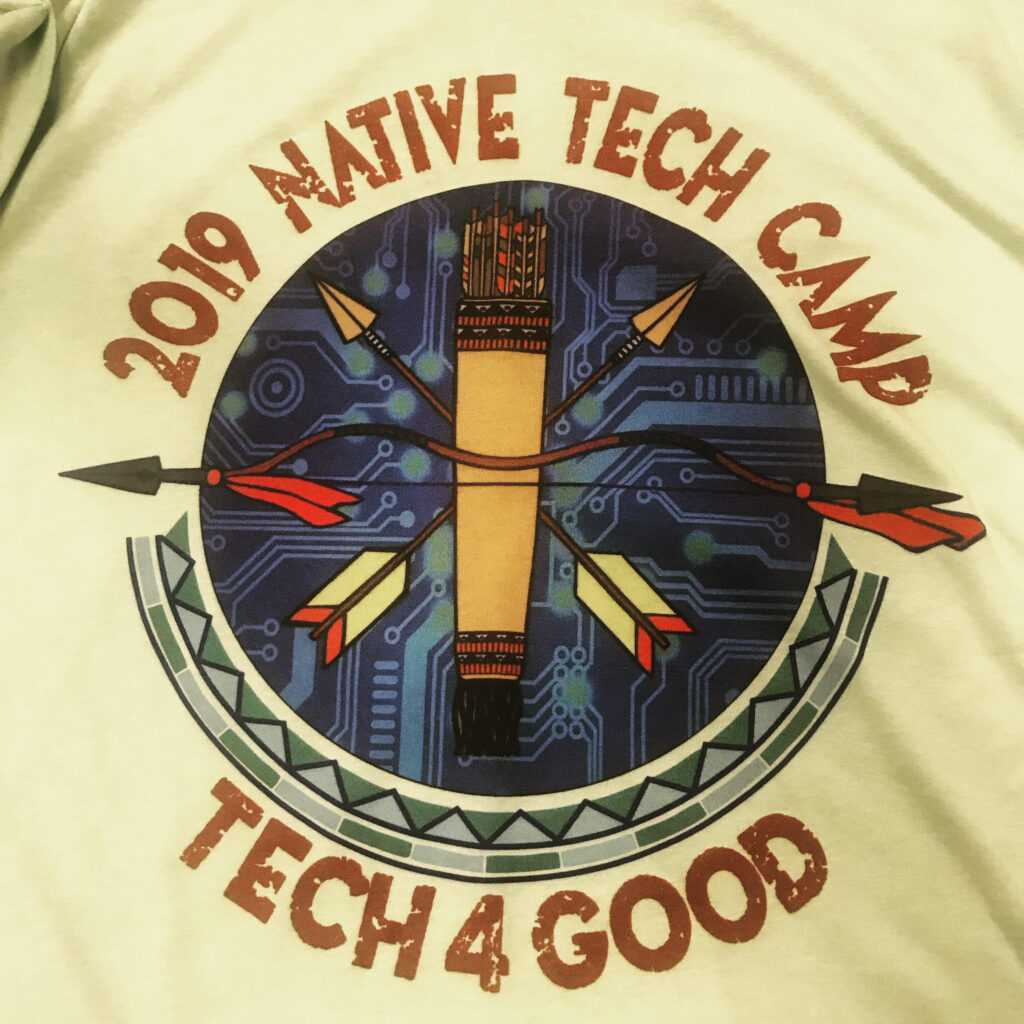
Through a United States Department of Agriculture (USDA) National Institute of Food & Agriculture (NIFA) grant, Tech4Good at Salish Kootenai College (SKC) had the opportunity to collaborate with the Confederated Salish and Kootenai Tribes’ Natural Resource and Tribal Preservation Departments as well as the college’s Extension Agency, Tribal Education, and local game developers’ Native Teaching Aids to create a School-Garden Network to engage eleven (11) middle school and high school classrooms across the reservation to grow gardens, share work via multimedia, and situate their learning within local cultural traditions. During the pandemic, the network delivered 50 raised garden beds, seeds, and practical gardening curriculum to engage students and families at home.
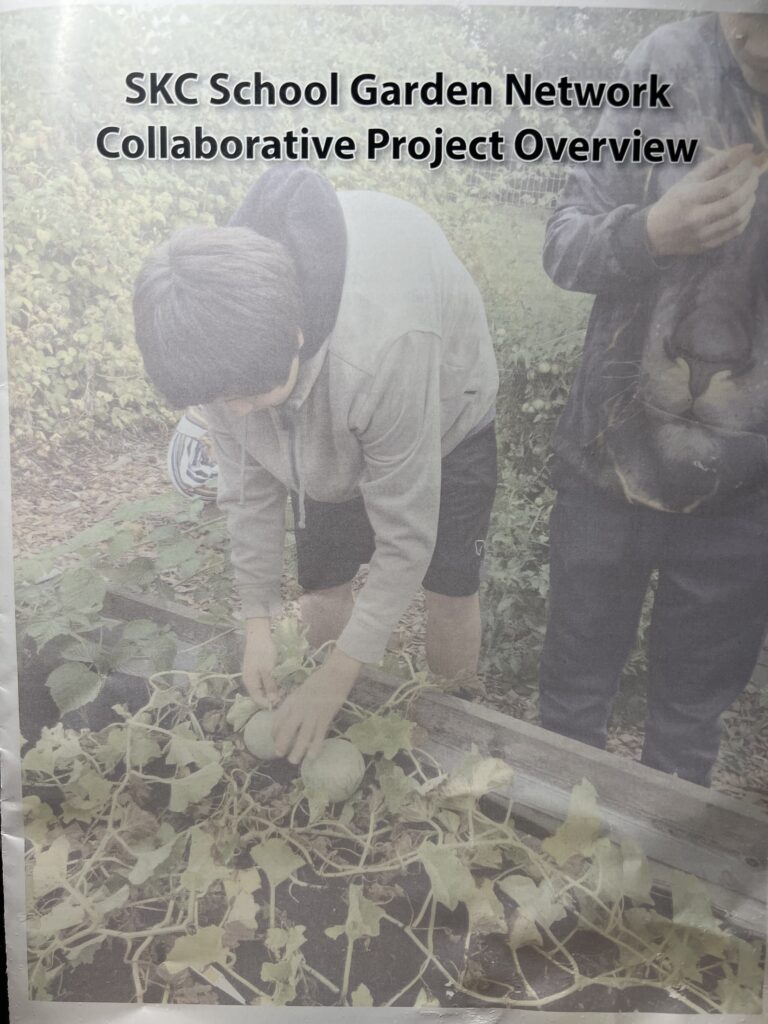
The partnership designed and produced a 12-month school calendar highlighting Healthy and Sustainable Diets For All and culturally important practices in collaboration with various artists, students, and faculty in the college’s Digital Design Technologies Department. Through professional development and support from our partners, Tech4Good was able to work with these inaugural classroom teachers and add a new cohort of teachers and students. Using garden cameras, 360-degree videos, a Flip video network, and cooperation, students and teachers at Tech4Good garden sites shared their work, lessons learned, and initial outcomes of collaboration with the community through this project.
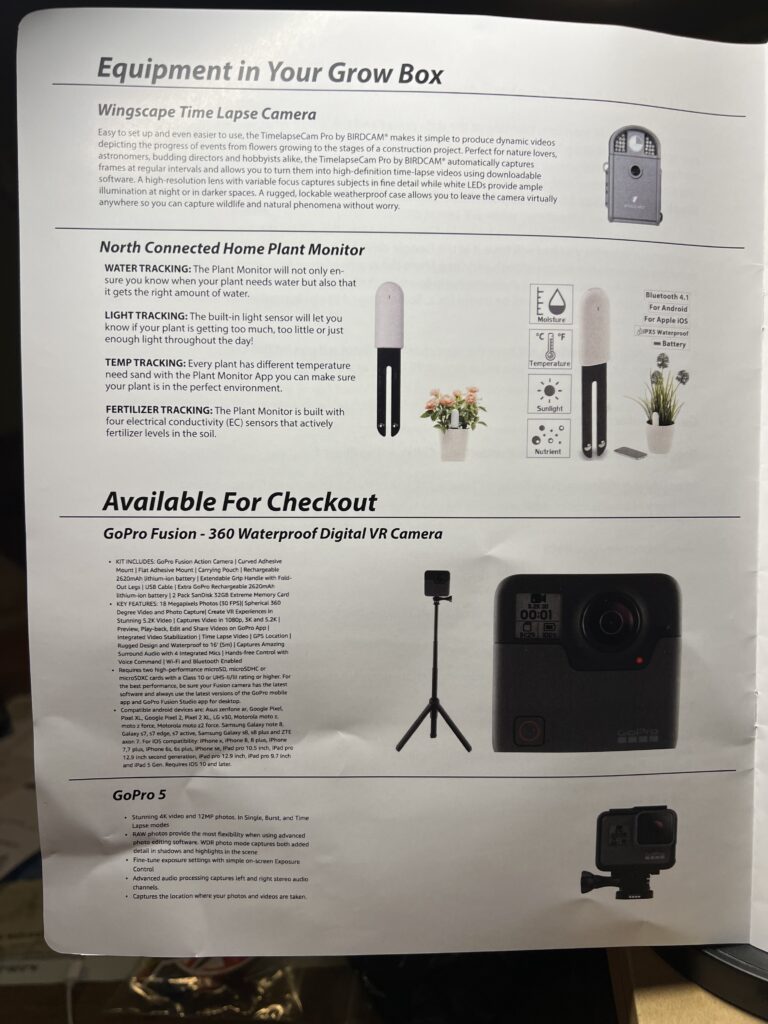

________________________________________
Tech4Good included a variety of community and college projects in its three years at Salish Kootenai College under Richter’s direction:
USDA NIFA grant
- School Garden Network
- Mission Valley Trivia Game
- School Year “Healthy & Sustainable Diets” Calendar
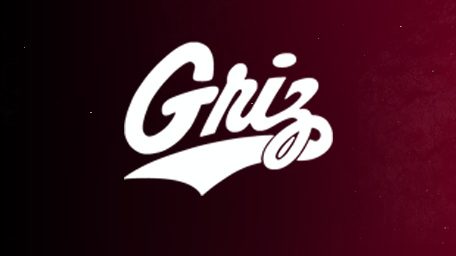
University of Montana
- Educational Technology Trends and Issues (EDUC582)
Graduate students in education – many practicing k-12 educators or non-profit directors of education – explored generative artificial intelligence, machine learning, and intelligent tutors and explored a variety of immersive environments for learning, applying design thinking and the learning sciences to engage students in evidence-based practices. While some students elected to help iLRN on designs for their 2024 Alternate Reality Game, others unboxed the University of Montana’s “Digital Twin” and the 3D teaching & learning possibilities through the Victory XR suite of tools, models, and systems.

- Immersive Bird
- Immersive Learning Research Network
- 10 years of successful international conferences (and online since 2020).
- Bringing together Computer Science, Game Studies, and The Learning Sciences to publish in high quality journals, the Immersive Learning Research Network has paved the way for this emerging field. Since 2015, Richter has collaborated with fellow iLRN Board Directors Anasol Peña-Rios and Dennis Beck in creating a high quality interdisciplinary publications team for immersive learning, now respected and widely cited the world over.
- Knowledge Tree
- Houses of Application
- International Geographic Chapters
- “Innovation Garden” –
- “Immersive Futures” – in the rapidly changing, emerging discipline of Immersive Learning, Dr. Richter led the Immersive Learning Research Network in conceiving of a persistent scanning & reporting mechanism to compliment the effort to showcase high quality research in the field. In Spring 2021, iLRN published their first “State of XR & Immersive Learning Report“, complete with 19 illustrated categories of emerging trends with examples. The report has been used as a benchmark for strategic planning by institutions of higher education and the workforce. With the help of a diverse and international team of immersive learning experts, Richter and iLRN Immersive Futures Board Director Maya Georgieva are preparing to release the 2023 report in early 2024.

- Annual International Conferences (2015 – present)


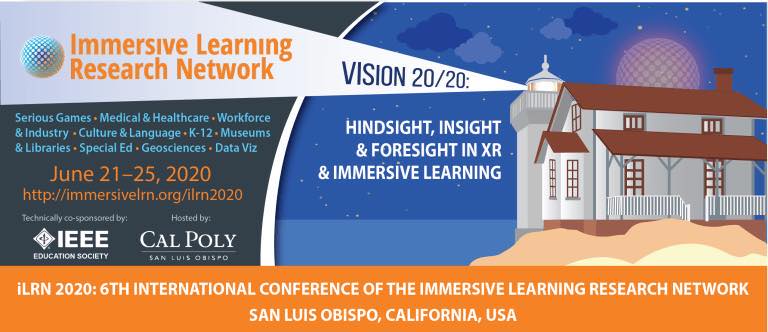
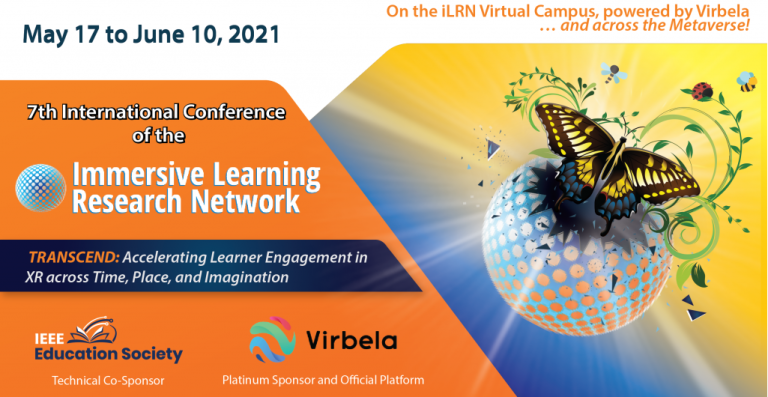
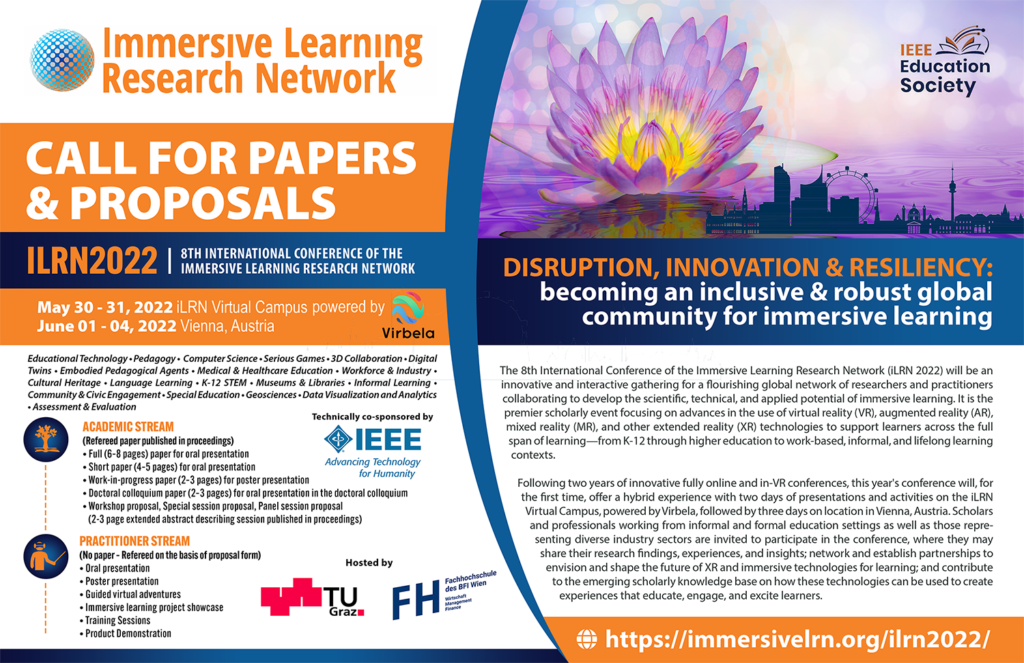
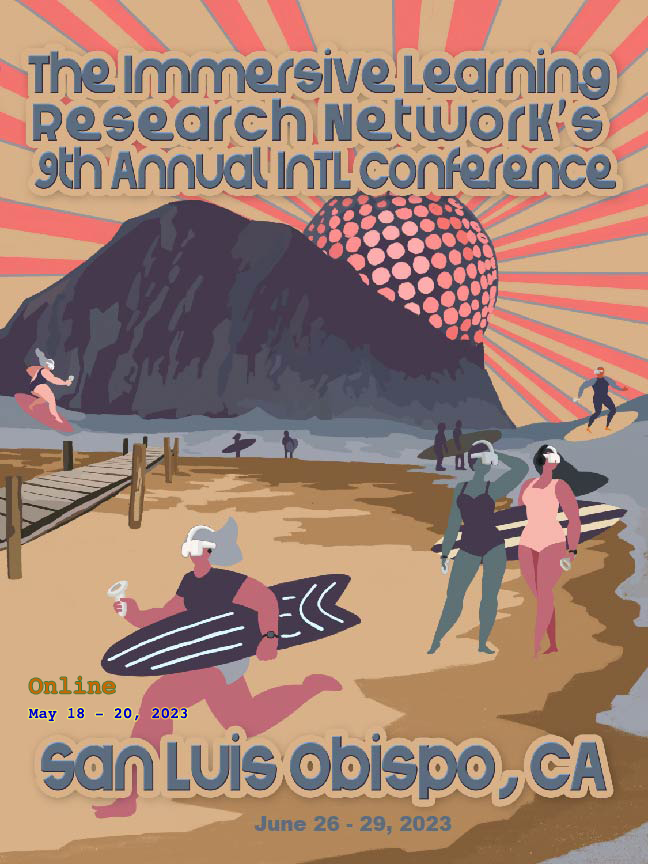
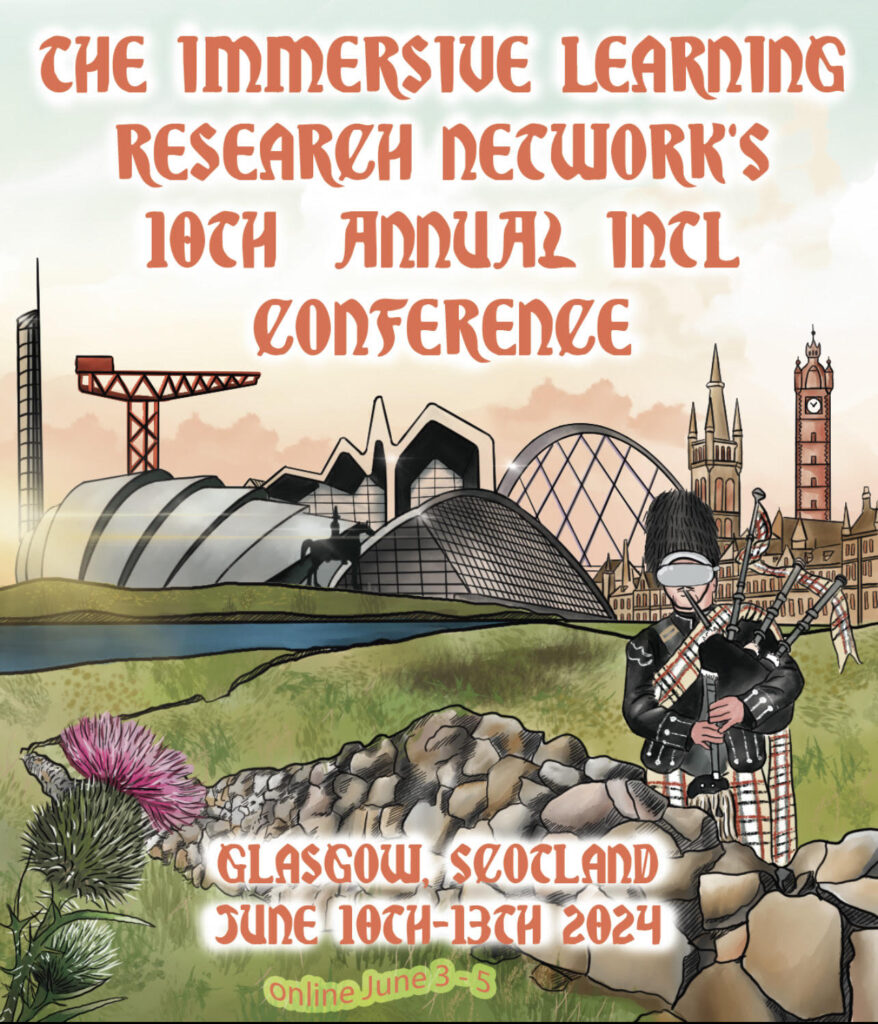
- iLRN Fuser: The Immersive Learning Research Network builds student opportunities into their annual conference – starting in 2015 with student discounts and a workshop and evolving into student internships, doctoral colloquium, and even leadership roles in the conference development. Since 2019, iLRN has hosted a student global immersive game jam. This allows students to dive into the intersection of game development and global impact with the exclusive 5thiLRNFuser Game Jam. Outreach to universities and college programs and directly to students through social media and webinars to learn and connect with a community of students, researchers, PhD students, and academics passionate about leveraging virtual worlds for positive change. Richter has been deeply involved in the design, creation, and support of the student network, including the iLRNFuser Game Jam – working most closely with three iLRN Board Directors, Markos Mentzelopolous, Kai Ereni, and Daphne Economou.
Target Audiences:- Students in Game Development
- Researchers in Immersive Technologies
- PhD Students Exploring Virtual Environments
- Academics Interested in Game-Based Learning and Sustainability
Vision
I envision a future where the transformative power of immersive technologies, games, and innovative pedagogical approaches catalyze a profound evolution in learning and society.
Passions
- Nature (ecology & evolution)
- Beasts (monsters, misfits, & mysteries)
- Humanistic Psychology (creativity, co-design, wonder, & transcendence)
- Literature (clear science writing, ethnography, science fiction, & horror)
- Art
- Design
- XR – (extended reality, please)
- Music (punk, hardcore, synth, industrial / noise, (almost) classical, ambient)
Research
Research Areas
- “Inclusion, Diversity, Equity, Access, and Social Justice” (I.D.E.A.S.)
- “Environmental Sciences”
- “Human-Computer Interaction”
- “Emerging Technologies”
Research Projects
- Immersive Birds
- Collaborating with members of the College of Arts & Media, School of Psychology and a Wildlife Biology professor working in iterative design cycles. Richter’s contributions include introduction of the Learning Sciences model and leadership for the team in structuring a Design-Based Research model (DBR) – including “think alouds” and mapping cognition & behavior over design affordances to plan and develop design specs, evaluation, and redesign team processes.
- iLRN’s Alternate Reality Game
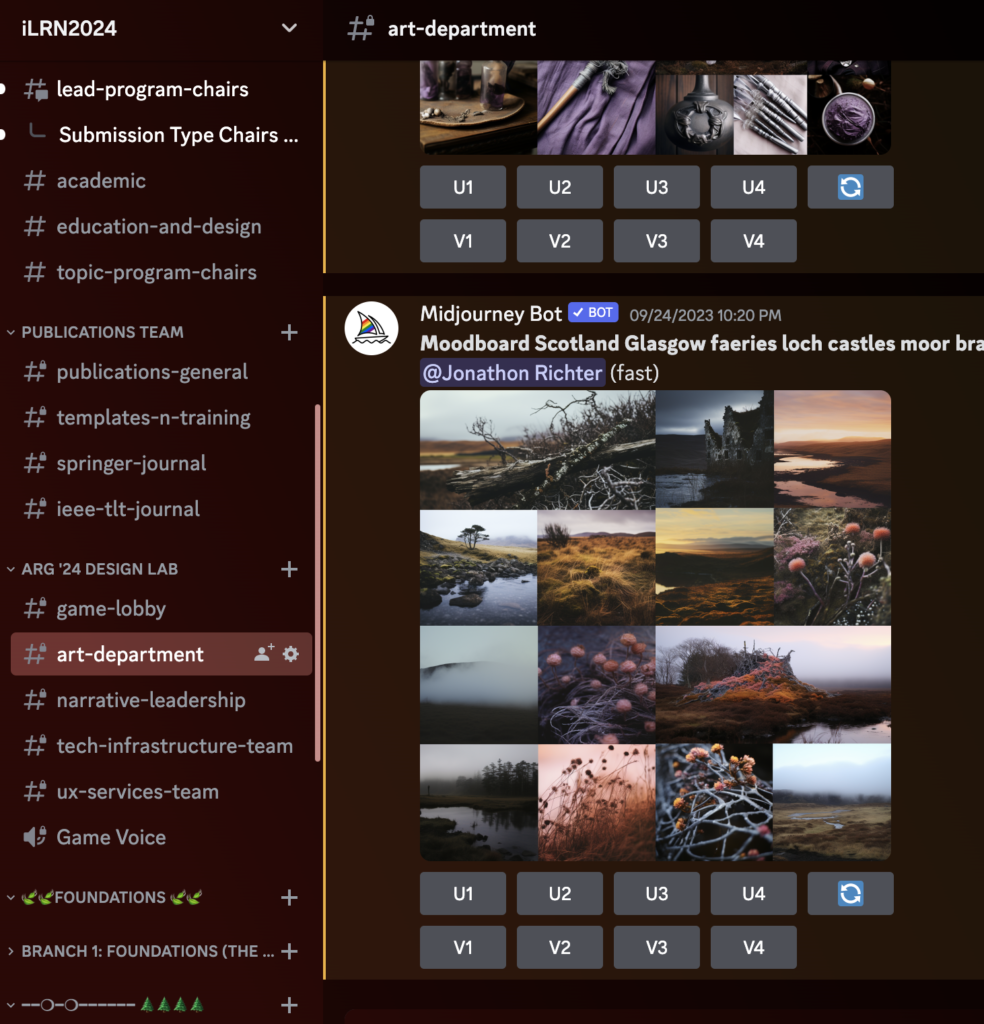
- iLRN’s Branch Houses of Application
- Track 1. Foundations of Immersive Learning Research and Theory (not linked to any particular application area).
Track 2. Assessment and Evaluation (A&E)
Track 3. Galleries, Libraries, Archives, & Museums (GLAM)
Track 4. Inclusion, Diversity, Equity, Access, & Social Justice (IDEAS)
Track 5. STEM Education
Track 6. Language, Culture, & Heritage (LCH)
Track 7. Medical & Healthcare Education (MHE)
Track 8. Nature & Environmental Sciences (NES)
Track 9. Workforce Development & Industry Training (WDIT)
Track 10. Self and Co-Regulated Learning With Immersive Learning Environments (SCILE)
- Track 1. Foundations of Immersive Learning Research and Theory (not linked to any particular application area).
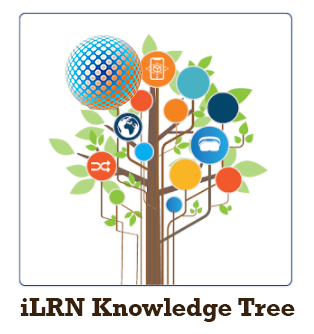
Collaborations
- Researchers
- Chris Dede, Harvard University
- Donna Davis, Oregon Reality Lab, University of Oregon.
- Taryn Stanko, Patricia Dahm, and Brooke Lahneman investigating virtual work through the lens of sociomateriality, finding that Virtual Work Identity intertwines human agency, material agency, situated work practices, and self-representations.
- Alan Miller and Catherine Cassidy, The University of St. Andrews (Scotland, U.K.)
- Markos Mentzelopolous and Daphne Economou, The University of Westminster (England, U.K.)
- Dennis Beck, The University of Arkansas, United States and Leonel Morgado, Coimbra University, Portugal
- Institutions
- University of Glasgow & St. Andrews University (Scotland)
- University of Westminster
- San Diego State University
- Coimbra University (Portugal)
- University of California – Santa Barbara
- California Polytechnic University (CalPoly)
- Organizations
- Virbela
- FrameVR
- Victory XR
- Meta
Publications
Lee, M. J. W., Georgieva, M., Alexander, B., Craig, E., & Richter, J. (2021). State of XR & Immersive Learning Outlook Report 2021. Walnut, CA: Immersive Learning Research Network. ISBN: 978-1-7348995-1-1
Stanko, T., Caulfield Dahm, P., Lahneman, B., & Richter, J. (August 2020). Navigating an Identity Playground: Using sociomateriality to build a theory of identity play. Organization Studies.
Wong, S., Richter, J., Manore, M. (July – August 2019). Virtual Sport Nutrition/Physical Activity Assistant Coach Mobile App for High School Athletes: Prototype Co-Development. Journal of Nutrition Education and Behavior, vol 51, issue 7, pg S123.
Richter, J. (June, 2019). Connecting Indigenous Knowledge and Western Science through co-design & XR on the Flathead Indian Reservation. Abstract for Poster Presentation at iLRN 2019 University of Wesminster, London, UK.
Gardner, M., Richter, J., & Harma, A. (2012). Virtual and Mixed Reality Intelligent Environments. Journal of Ambient Intelligence and Smart Environments, vol. 4, no. 1.
Richter, J. (January – March 2011). Collaboratories and Virtual Safaris as Research in Virtual Learning Environments Scholarship. International Journal of Gaming and Computer-Mediated Simulations, 3(1), 94-96.
Stanko, T. & Richter, J. (2011). Learning to work inworld: Conducting qualitative research in virtual worlds using in-depth interviews. In J. Salmons (Ed). Cases in online interview research. Sage Publications.
Richter, J. (2011). In search of future-focused learning technologies. EDUCAUSE Review, vol. 46, no. 3 (May/June 2011).
Richter, J. & Livingstone, D. (2011). Multiuser games and learning: A review of the research. In S. Tobias and D. Fletcher (Eds.) Computer Games and Instruction. Information Age Publishers.
Richter, J., & Dawley, L. (2010). Creating context for educational research in virtual worlds: An invitation to dialogue. In International Journal of Games and Computer-Mediated Simulations.
Richter, J. (2009). Book Review of “Learning and teaching in the virtual world of Second Life” In The International Journal of Virtual and Personal Learning Environments.
Richter, J. (2009). Future-focused learning ecologies in a rapidly evolving global ecosystem. In On The Horizon, Emerald Publishing.
Keeler, C., Richter, J., Horney, M., Anderson, L. and Ditson, M. (2007). What works for exceptional learners: Differentiated instruction online. In What Works in K-12 Online Learning, edited by C. Cavanaugh and R. Blomeyer. Eugene, OR: International Society for Technology in Education.
Richter, J. (2007). Critical engagement of teachers in Second Life: Progress in the SaLamander Project. In Livingstone, D. & Kemp, J. (Eds)., Second Life Community Conference 2007 Education Track Proceedings. Available at http://cis.paisley.ac.uk/livi-ci0/slccedu2007rev2.doc
Richter, J. (2006). Future-focused Electronic Portfolios at Montana State University – Northern. In Jafari, A. & Kaufman, C. W. (Eds.) Handbook of Research on ePortfolios. Idea Group, Inc: Hershey, PA.
Richter, J. (2005). Unchaining Prometheus: Using standards and learning tech to enhance futures thinking. In Foresight, innovation and strategy. Wagner, C. G. (Ed.). World Future Society: Bethesda, Maryland.
Lombardo, T. & Richter, J. (2004). Evolving Future Consciousness through the pursuit of virtue. In Thinking Creatively in Turbulent Times. Didsbury, H. (Ed.) World Future Society: Bethesda, Maryland.
Richter, J. (2003). The Role of the Future in Work Motivation. Doctoral Dissertation. University of Montana. Available at: https://scholarworks.umt.edu/etd/9464/
Teaching
Teaching Philosophy
Courses
Educational Technology
Design
Design Principles
Projects
- iLRN Conference Development

- iLRN Virtual Campus
- iLRN Immersive Futures projects
- Frame VR
- Invision Community
- Alternate Reality Games
Design Patterns
- Hall & Hord’s (1974) Concerns-Based Adoption Model was instrumental for Richter’s early understanding of learning technologies, examining how teachers adopt & use technology – and why. In CBAM’s Levels of Concern model, examining what teachers care about and their style of making use of technology in “Innovation Configurations”, “Stages of Concern”, and “Levels of Use”, thus launching Richter’s career long pursuit and fascination with the patterns of human-computer interaction.
- Stereotypes, Cognitive Frames & Biases, and the Metaphors We Live By
- Literacy, Hypertext, Graphic Organizers, and Web Design
- VOSS Organizational Routines and Organizational Learning
- MERLOT and structuring curricula across the Disciplines
- Typology of Learner Engagement in Second Life
- Demonstration
- Experiential
- Diagnostic
- RolePlay
- Co-Design / Construction
- Collaborative
- Christopher Alexander’s “Pattern Language: Towns, Buildings, Construction” applied to 3D virtual design and Second Life
- Game Mechanics
- iLRN patterns of engagement – organization of Houses of Application
Community Engagement
iLRN
Community Initiatives
- Organizing Conferences, Meetups, and Game Jams. In 2002, Richter organized Techspo, his first conference and has been creating innovative meetups and conferences ever since.

- Cookies and Pickles.
- PJW College of Education “Tech Day” with June Noel
- Flathead Tech4Good.
A bit extra
- ZACC Monster Project
- Bauhaus Montana (2013).
- SlowGlass (2014).
- DadMom (2021).
- Cryptozoology and the Internet
C.V. and Contact
- [ Downloadable PDF of Jonathon Richter’s curriculum vita ]
- [please complete this form]
Awards & Honors
2008 Educause
2019 Best Paper
2023 Hardest Working Global Leader Award
Testimonials
Colophon
this professional website for Jonathon Richter was written in the third rather than the first person perspective. While first-person writing offers intimacy and immediacy between narrator and reader, third-person narration offers the potential for both objectivity and omniscience. While neither objective, nor omniscient, Jonathon’s aim is to portray things truthfully and fully, with perspective. Thus, third person was selected to best illustrate such dimensions in his (er, my) portfolio. <wink>.
